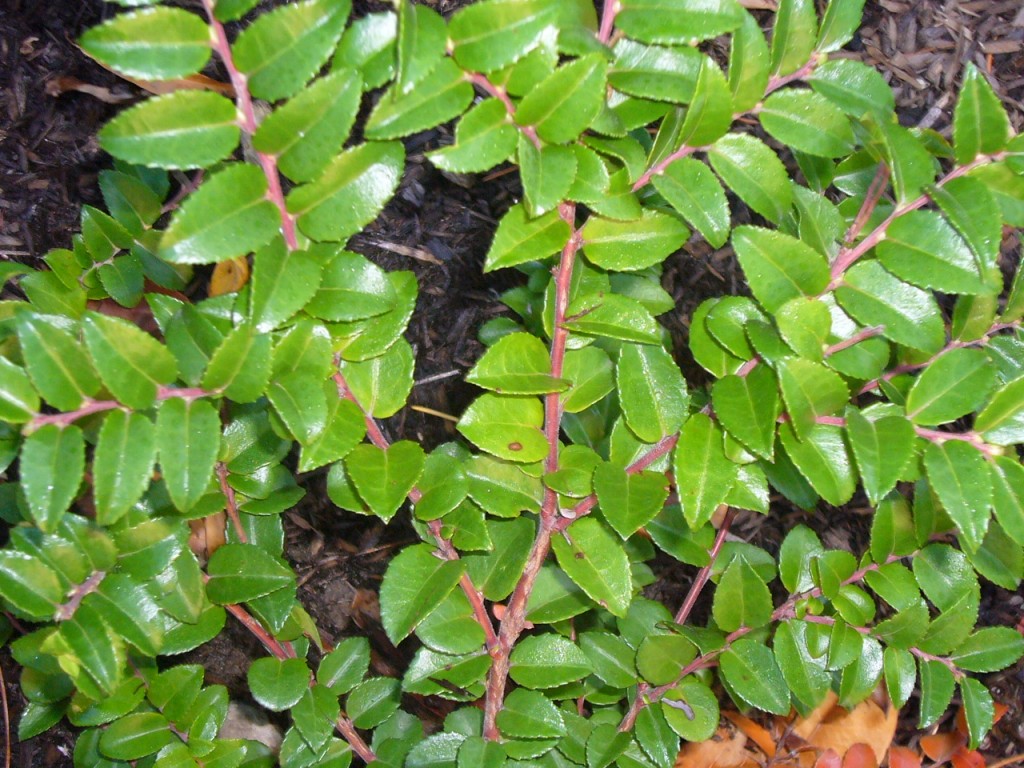Evergreen Edibles : Berries
Having evergreen perennials in your garden may not seem like a big deal now in May when everything is lush green and blooming. But I haven’t forgotten the many days of winter, looking out into the mostly barren garden, wishing I had added more evergreen and winter blooming plants to the landscape.
I think many of us want to add more edibles to the landscape these days as well. I know I do, but I’m not good at providing the kind of attention that most food crops need. The strawberries in my garden are evergreen, but their low growing foliage may not look that great in the winter. One of the goals for the garden this year is to add both evergreen plants and edible plants. I found the perfect solution in blueberries!
Growing blueberries in your yard is an easy and aesthetically pleasing way to add edibles to an existing landscape. Need a small hedge? The evergreen Vaccinium “Sunshine Blue” will do the job. The bush will retain a somewhat rounded aspect as it grows into its full size of 3-4 ft. It features blue-green foliage with pinkish highlights and bell shaped pale pink/white flowers in the spring. The self-pollinating flowers will mature into berries from late July into August. Most blueberries require other blueberries to pollinate and bear fruit. In the fall about half of the leaves will turn red and fall to the ground, with the rest remaining throughout the winter. Sunshine Blue will require watering throughout the growing season. Dispose of coffee grounds under the bushes to add acidity to the soil and you will be rewarded with a vigorous plant and delicious berries.
Another evergreen edible is the Vaccinium ovatum, or huckleberry (apparently people argue about whether or not huckleberry is a blueberry). The variety I found is called “Thunderbird”. This Pacific Northwest native (mostly woodland) plant is easy to grow in your garden, and like the Sunshine Blue can also be used as a hedge. It can grow as large as 6 feet tall by 7 feet wide, but with careful pruning can be contained to 3′ x 4′ The leaves are deep green, small and glossy. The new growth brings a reddish copper color that will deepen to green. Small bell like flowers hang from underneath the foliage and ripen into small blue black berries by the late days of summer. Like the Sunshine Blue, it can handle full sun or part shade as long as it’s in well-draining soil. Once established, the huckleberry is fairly drought tolerant.
Updated 9/28/2011:
Vaccinium glauco album is one more evergreen edible that I have in my garden in the form of a tiny hedge. The leaves are a blue-green (glauco) on top, and darken when mature. The underside of the leaves are a grayish white (album). The flowers are a pale pink and then turn into fat dark purple berries.
Don’t be intimidated by this dwarf shrub’s Himalayan roots. It will not invade your garden like a Himalayan blackberry. It is slow growing, spreading via runners under the surface of the soil. Himalayan huckleberry needs a somewhat protected spot so that it doesn’t get sunburned. Mine is thriving with morning sun and afternoon shade. It has made it through two winters now and was a little slow to recover this last spring but then came back bigger and more beautiful than before. I started with 3 plants but liked it so much I’ve added 6 more and relocated them to create the hedge. I’ll post again in the spring and let you know how they are growing.



Pingback: Tweets that mention Evergreen Edibles : Berries | Fresh by Northwest -- Topsy.com